

Geography of Iriomote Island
| Locality of Iriomote Island |
| Yaeyama Islands and traffic |
Iriomote Island is situated
in latitude 24 degrees 15~25 minutes north,
123 degrees 40~55 minutes of east longitude,
locating in the East China Sea. It
forms Yaeyama Islands with Ishigaki, Taketomi,
Kohama and Kuro Islands. Distance from
Iriomote to Taiwan is about 200km, also to
the tropic of cancer is only 100km, Taiwan
is much nearer than Okinawa Island.
Latitudinally, it is
more southern than Taipei City in Taiwan.
Although there is one hour difference
between Taiwan and Japan (Taiwan is later),
the standard time of Japan is used in Iriomote
which is located next to Taiwan. Therefore
there can be about one hour difference between
Iriomote and Japanese main islands. This
"time difference" can not be a
very much hindrance for tourists, however,
sunset time is quite late particularly in
summer time, we are surprised at twilight
brightness at about 8 o'clock PM around the
summer solstice. In contrast, sunrise
is late, it is pitch-dark at 6 o'clock AM.
The total area of Iriomote
Island is 284km2 and the circumference is 130km, it is the
secondly largest island in Okinawa Prefecture
next to Okinawa Island.
The island contains of
many mountains and includes a little of level
ground, more than 90% of the total area is
covered with subtropical primeval jungle.
However, there are not extremely high
mountains, even the highest one of Mt. Komi
is 470m above, there being some other 400m
class mountains. The mountains overlap
and their ridges range one another, it makes
a complicated topography. Most of the
primeval jungle is national forest, being
designated as Iriomote national park, animals
and plants are protected by supervision of
a district forestry office. There is
some level ground around estuaries of large
rivers and shorelines, being utilized as
residential area, farming area and pastures.
Rivers well develop because
of the complicated topography and much rain,
there are many rivers such as Urauchi River,
which is the largest one in Okinawa Prefecture,
and many mountain streams. The water
current and the complicated landform can
make many waterfalls. In particular,
Pinaisara Falls which is the highest one in Okinawa Prefecture
and Mariyudu, Kanbire Falls which is located in Urauchi River are very
well known. Mangrove forests develop
at riversides around the estuaries, especially
the mangrove along Nakama River basin is
at the largest of those in Japan.
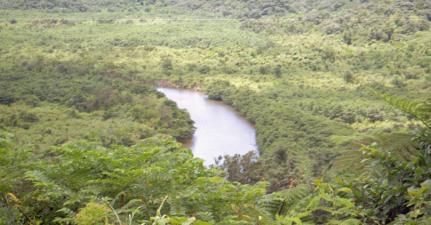 |
| Broadly expanded mangrove forests in the middle reaches of Nakama River |
Although it is not well
known unexpectedly, a good quality of coal
is produced from Iriomote Island, in former
days, there were large-scale of coal mine
shafts in Uchibanare Island, Urauchi River
basin and so on. However, all of those
have been abandoned according to reduce of
demand, there can be still more deposits
even in these days. Since there are
soils of elevated corals called Ryukyu limestone
at some part of the island, limestone caves develop in places. There are the only
one hot spring of Okinawa in Iriomote Island. Because
a volcanic range runs nearby, even a submarine
volcano is located in northern 50km distance
from the island. Accordingly, an earthquake
occurs occasionally but not so frequently,
once we had an unprecedented great tsunami
at this area.
Although population of
people who have certificate of residence
in the island is approximately 2000, it increases
to about as two times as usual during the
tourist season owing to the many tourists.
![]()
Climate
 |
| Seasonal changes of air temperature in some places |
 |
| Seasonal changes of water temperature in some places |
 |
| Seasonal changes of precipitation in some places |
According to Koppen's
climate classification, Iriomote Island belongs
to the humid temperate climate (Cfa). However,
discriminative criterion between the temperate
climate (C) and the tropical climate (A)
is whether monthly average temperature of
the coldest month is lower than 18 oC or not. In the case of Iriomote Island,
however, as the average temperature of the
coldest month of January is 17.6 oC, it is not excessive speaking that Iriomote
is under "the tropical climate".
Yearly average temperature of Iriomote
Island is 23.3 oC, being warmer than Hong Kong where the
average temperature is 22.8 oC.
Thus, Iriomote is much
warmer than the Japanese main islands especially
in the winter, however, temperature in the
midsummer does not differ very much from
that in the Japanese main islands. It
is not rare that daily maximum temperature
of the Japanese main islands in the midsummer
excesses 35 oC, but it is at most 32~33 oC in Iriomote, the maximum temperature tending
to be lower. However, the temperature
and the hotness are different, it is extremely
hot in the midsummer of Iriomote. Strength
of sunlight and quantity of ultraviolet rays
must be as many times as those in the Japanese
main islands.
Therefore, enough preventive
measures for the ultraviolet rays necessitates
when walking outside and swimming in the
sea, sunscreens and sunburn lotions should
be necessary articles. Although some
people may prefer to get a good suntan in
Iriomote, suddenly exposing bare skin for
the sunlight must be a suicidal act. I know some people who were sick
in bed by extreme sunburn, getting blisters
in their skin, also fever and dehydration.
In order to get a beautiful suntan
in Iriomote, you should have made foundational
suntan in advance at a suntan saloon, or
gradually make the suntan with a protection
by the sunscreen. When snorkeling in
the sea in the midsummer, I would recommend
you to swim with a T-shirt.
As for clothing, we can
live with a T-shirt and a short pants during
April to November because the daily maximum
temperature excesses 20 oC. In the other seasons, it is enough
with a sweat shirt and trousers, we never
wear a thick sweater or a coat. Even
in the winter, when sunny days the sunlight
is rather strong and we feel hot.
Since Iriomote Island
is located at the center of the Black Current,
sea water temperature is also high, it never
falls below 20 oC. The yearly average sea water temperature
is 25.3 oC, such a warm marine environment cultivates
colorful corals, being a paradise for various
tropical fishes and shellfishes. By
the way, the water temperature when the start
of the swimming season in the Japanese main
islands is 22~23 oC, therefore we may be able to swim in the
Iriomote throughout the year, however in
the winter (December~February), as we feel
cold after getting out of the sea because
of a seasonal wind, actually it might not
proper for swimming. Of course diving
is available throughout the year, but it
may be better for people who are sensitive
to the cold to wear a dry suit. Nevertheless,
we can tell how Iriomote is warmer when comparing
the water temperature with that of the other
places. But notice that many of the
diving services in the island are closed
since a few weeks after new year until the
end of February because visiting guests are
few at that period.
We have large amount
of precipitation in the Iriomote Island all
over the year, the annual precipitation is
as 1.6 times as that in Tokyo. Thus
we always have abundant water, never falling
in a drought. The landform with many
mountains can make a rain cloud appear, always
there being some squall cloud somewhere over
the island and being raining. Even
if it is fair sunny, suddenly a terribly
dark cloud appears and a squall like water
falls will come immediately. Such a
phenomenon is too common to prove that the
climate of Iriomote is able to be called
as tropical.
The spring rainy season
is since the middle of May until the middle
of June, every year. It is about
one month earlier than that in the Japanese main islands, the
rainy season in Iriomote is over in place
of the beginning of that in the Japanese
main islands because the seasonal rain front
goes north. The humidity during the
rainy season in Iriomote is 85~100%, as
if we were in a steam bath. But the
precipitation during the rainy season in
Iriomote seems to be less than that in Okinawa
Island.
After the rainy season,
the real summer comes. When immediately
after the rainy season, the days with fair
weather and no wind continues, it is the
best season to feel a charm of Iriomote.
After the middle of July,
the typhoon season which is popular in Okinawa
comes. About 3~5 typhoons attack or
influence to Iriomote a year. The typhoons
frequently appear in this season in waters
from north of the Philippines to near Yaeyama.
Features of the typhoons around this
area are that generally they move slowly
and they steadily develop in moving.
For example, it is not rare that Iriomote
Island has been in a strong wind area of
the typhoon for 4~5 days. Power
of the typhoons are also dreadful, houses
are completely destroyed and concrete made
telephone poles are broken at the root.
Although sometimes people die or are
injured owing to the typhoon
in the Japanese main islands, it seldom happens
in Okinawa. Because people never wander outside during the typhoon to realize
a dread of the typhoon.
When visiting Iriomote
in the summer tourist season, some people may unfortunately
encounter a typhoon and are
shut up in a hotel for a long time. Then,
you should give up with good grace and hope
the next visit. In Okinawa, even if
people lose their houses to live by the typhoon,
all we can do is just to give up. During
the typhoon in Kanpira-so, tourists are playing
games such as cards all together and are
thoroughly drinking at night. However,
it may be pleasant because we can make
friends with the other tourists who were
shut up together.
![]()
Animals and plants inhabited
Since primitive nature is remained in Iriomote Island, some peculiar animals and plants inhabit there. In particular, Iriomote wild cat (Iriomote yamaneko) which is designated as a special protected animal is popular, Iriomote Island is well known as a "habitable island for wild cat". Although some people may imagine that the Iriomote wild cat wanders everywhere like an ownerless cat, it must not be true and we hardly can see it. Even myself who visited Iriomote more than 20 times have not seen it yet. Nevertheless, I have closely encountered it, that is, one night when I was running on a load-carrying platform of a truck, suddenly the driver stopped it and I heard that he had seen a wild cat at a stream along the road . But the wild cat had already disappeared when I got off from the platform and observed there. Estimated present existential individual number of the Iriomote wild cat is about 100, so we are making efforts to protect it.
|
Not only for Iriomote wild cat, Iriomote Island is a paradise for various livings such as kanmuri-washi, semaru-hakogame, kishinoue-tokage, which are also designated as protected animals, and so on. I will explain on some animals and plants below to be referred.
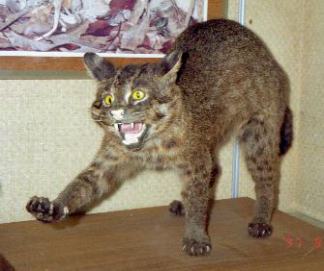 |
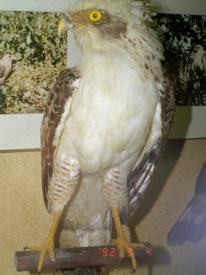 |
||
| Iriomote-yamaneko (stuffed specimen) Felis iriomotensis |
Kanmuri-washi (stuffed specimen) Spilornis cheera |
||
|
|
||
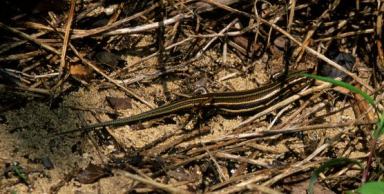 |
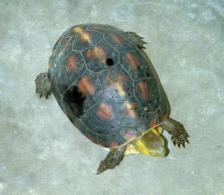 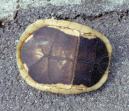 |
||
| Kishinoue-tokage Eumeces kishinouyei |
Semaru-hakogame Cuora flavomarginata |
||
|
|
||
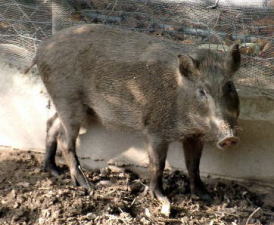 |
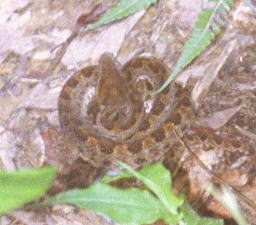 |
||
| Ryukyu-inoshishi Sus scrofa riukiuanus |
Sakishima-habu Trimeresurus elegans |
||
|
|
||
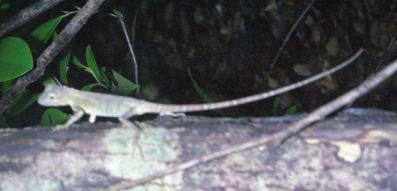 |
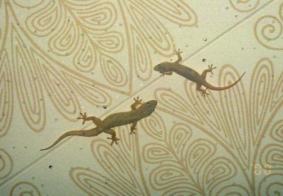 |
||
| Kinobori-tokage Japarula polygonata ishigakiensis |
Hooguro-yamori Hemidactylus frenatus |
||
|
|
||
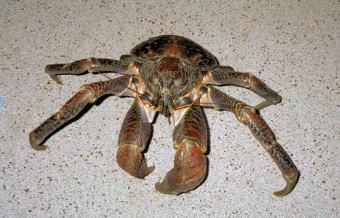 |
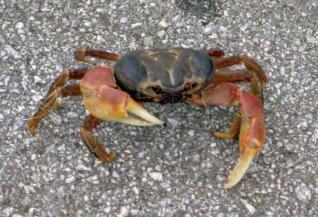 |
||
| Yashi-gani Birgus latro |
Oka-gani Cardisoma hirtipes |
||
|
|
||
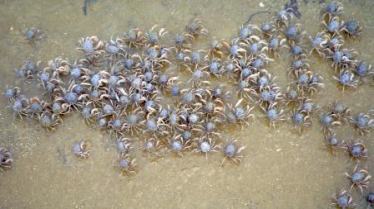 |
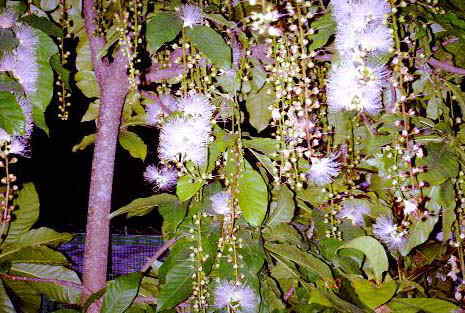 |
||
| Minami-kometsuki-gani Mictyris brevidactylus |
Sagaribana Barringtonia racemosa |
||
|
|
||
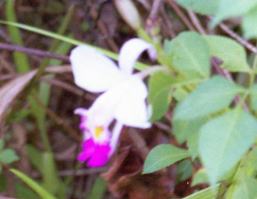 |
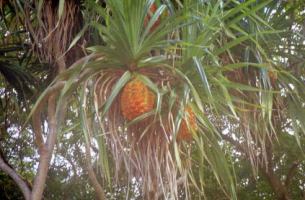 |
||
| Nariya-ran Arundina graminifolia |
Adan Pandanus tectorius |
||
|
|
||
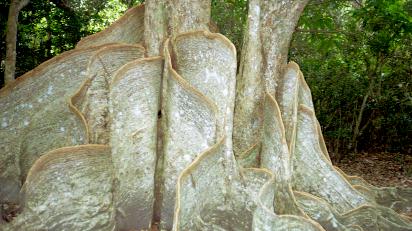 |
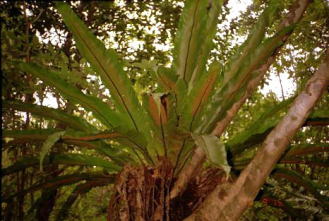 |
||
| Sakishima-suo Heritiera littoralis |
Otaniwatari Asplenium nidus |
||
|
|
![]()
History and place names
Although it is uncertain when people began to live in Iriomote Island, Iriomote first appears in an ancient document published in Korea at 15th century. Even in the days before that, there is an evidence of human life suggested from traces of disposition of a dead body by exposing it to the elements. However, nevertheless Iriomote is a big island, the fact that there is a little ground suitable for living and an endemic disease of malaria have not permitted the people to settle.
Although now we have a specific remedy for malaria, in former days it was an extremely terrible disease, not a small number of villages repeated to perish owing to the malaria. However, Iriomote is a land very suitable for rice farming because there is abundant water, so people of adjoining Aragusuku and Hatoma Islands expressly came there to farm. That was just the way they could, because they could not settle there due to a dread of the malaria. After the World War 2, it is supposed that the malaria has been eradicated from Iriomote, at last it can be a place where we can live in peace.
Now existent villages in Iriomote Island are, ranging along the circumference road from the south, Toyohara, Ohara, Otomi, Komi, Mihara, Funaura, Uehara, Nakano, Sumiyoshi, Urauchi, Hoshitate, Sonai and Shirahama, there the road ends, however more ahead, there are villages of Funauki and Amitori. In these villages, the area from Toyohara to Mihara is called eastern region and westward (northward) from those are generally called western region. Once there was not a road to connect the eastern and the western regions, therefore the traffic depended on a boat nevertheless within an island, at last the two regions are connected with the northern coastal road which was opened in 1977.
Existent villages in Iriomote Island
The oldest village in Iriomote is Sonai, which is considered to continue to exist at least since 14th century to the present time. Also Komi in the eastern region is regarded to be established at the oldest age of Iriomote, however, it repeated to perish because of the malaria in question, the present village is established by newly immigrated people after the World War 2. Further, some villages such as Otomi and Sumiyoshi were established by a systematic immigration. Thus, most of the present villages in Iriomote can be regarded to be comparatively new except a few ones.
Uehara where our Kanpira-so is located is the village with the most population in Iriomote. Although it once perished at the beginning of 20th century, thereafter people immigrated from Hatoma Island and everywhere in Okinawa, now showing the most prosperity in Iriomote.
Culture and language
Considering the culture of Ryukyu Islands in the prehistoric age from archaeology, Okinawa Island with its adjacent islands and Sakishima Islands including Iriomote formed totally different cultural spheres each other, Sakishima Islands were common to southern cultural spheres of the Philippines and Polynesia. However, it was gradually integrated into the Okinawan culture owing to prosperity of Ryukyu Kingdom originated from Okinawa Island.
As earlier mentioned, very few villages in Iriomote continue to exist from the ancient time, therefore what is called traditional culture from the ancient age does not remain very much. But in some villages, which exceptionally have a long history, such as Sonai and Hoshitate, important traditional events such as "shichi" and "honensai" are held every year by all of the village people. It is considered that such traditional events once existed in every village, it was handed down from some elderly people who once lived in Sakiyama and Amitori which have perished comparatively recently.
The language spoken in Ryukyu Islands extremely differs from that in Japanese main Islands. The language of Okinawa is sometimes called Okinawan dialect (especially in Okinawa itself), however, it differs from the Japanese language not only in words but also in conjugation of verbs and adjectives, thus it further excesses the dialect level. For example, they can be different at over the levels between Spanish and Portuguese, and between Malay and Indonesian. It can be natural because there used to be a "distinct country" called Ryukyu Kingdom in Okinawa. Thus, hereafter the language of Okinawa is expressed as "Okinawan".
In Okinawan, language spoken in Okinawa Island and its adjacent islands and that spoken in Miyako and Yaeyama Islands (Sakishima Islands) seem to differ from each other very much. But for common Japanese people who live in the Japanese main Islands, they cannot distinguish their differentiation because they do not understand both of the languages at all. I have ever talked with a man who came from Okinawa Island to work as a laborer and was staying in Kanpira-so for a long time, then he said "I don't understand the language in Yaeyama at all.". However he also said that he generally understood the languages in Amami and Okinoerabu Islands. Since Ryukyu Kingdom expanded its sphere of influence to Amami Island in its heyday, Amami, Okinoerabu and Yoron Islands were completely in the Okinawan cultural sphere, so languages can be similar one another. In contrast, the language in Yaeyama is preserving its peculiarity even after Yaeyama was integrated with Ryukyu Kingdom as Yaeyama once belonged to the different cultural sphere from Okinawa. However, people who can speak pure native language of the island are undoubtedly rapidly reducing, actually people in young generation hardly can understand such a traditional language.
People in Iriomote Island of course well understand the standard Japanese language, therefore if a foreign tourist can speak Japanese, the common Japanese is available, also some broken English might be understood in some cases.
![]()
Administration and keeping the peace
Iriomote Island belongs to Taketomi-cho (cho means an administrative town), Yaeyama-gun, Okinawa Prefecture, of course it is the largest island in Taketomi-cho. Administrative Taketomi includes very wide area, all of the islands in Yaeyama except Ishigaki and Yonaguni Islands belong to the Taketomi-cho. Because all of the islands in Yaeyama excluding Ishigaki and Yonaguni which are united culturally and populationally are combined into a single administrative town, and the name of Taketomi Island where once a government office of Ryukyu Kingdom to reign over Yaeyama was placed was taken for the administrative name. Therefore you may imagine that Taketomi town office is located in Taketomi Island, however actually it is not, the town office is surprisingly located in Ishigaki Island. It is by a reason that Ishigaki is convenient in traffic and transportation from any islands in Taketomi-cho (every sea route to the other island starts from Ishigaki), it is a very interesting administrative system. They say that Ohara in Iriomote is regarded as a likely candidate place for moving of Taketomi town office in the future.
In Iriomote Island, there are substations of Yaeyama Police at Ohara, Funaura and Shirahama, a single policeman is residing each. Although we sometimes see some of them patrolling by police car around the island, we hardly see them rushing to the scene in sounding a siren. So far as I know, it was only when a boat of Vietnamese refugees was washed up to Uehara and when an accident happened during a diving at Barasu Island. It suggests how peaceful Iriomote is, on the other hand, there are very few causes of cases and accidents according to a little population.
In October, 2000, a case of murder happened in Hateruma Island and it was exaggeratedly reported by mass media. I guess perhaps it is the first event in the history of Yaeyama. Although such a kind of case is quite common everywhere in the Japanese main islands, it greatly surprised the people as it happened at an unlikely place. Except Ishigaki that is rather urbanized, I have hardly heard of any crimes even a theft in the islands in Yaeyama. If a person commits such a criminal act, he will not live there any longer. It is as same as in Iriomote.
I stay at Kanpira-so every time in Iriomote, always leaving my valuables such as cash in my room and have not locked it up. Of course I would never recommend you to do that, but it suggests the safety of Iriomote. Such a place may be a dream land comparing with the other places in the world. However, as the late case in Hateruma symbolizes, for example once a wanted man was arrested in Ishigaki Island, it might be true that the recent situation of Yaeyama is changing worse.
![]()
Traffic
Since there is not an airport in Iriomote Island, we access to the island by sea routes from Ishigaki Island. Entrances from the sea to the island are, Ohara Port in the eastern region and Funaura or Uehara Ports in the western region. We have many sails of rapid boat and ferry boat to commute every day, they are transporting tourists and goods.
There is only one trunk road in the island, which is the coastal circumference road connected Toyohara in southeastern part with Shirahama in northwestern part, there are no roads which run in all directions unlike the other islands. In Addition to that, there are some small roads for life and farming at every village. The circumference road is fairly maintained. Once construction of a crossing road of the island was planned and it had started partly, however, it was given up in order to preserve the nature. The traces of that plan is Otomi Forest Path and Shirahama Forest Path. At Ohara, there used to be only one crossing with a signal in the island, but that was made also at Nakano some years ago, the traffic signal in Iriomote has surprisingly become to be two. There are no no-parking areas in the island, also no traffic jams because cars are not so many.
The traffic methods for sightseeing depends on a bus on a regular route, a taxi, a rental car and a rental motorcycle, but the route bus is not very useful because its run times are very few. Although the rental car is useful when making sightseeing by some people, you should be careful not to fall into no fuel as there are only 3 gas stations at Ohara, Uehara and Hoshitate. By the way, the gasoline is expensive in Iriomote. Maybe it cannot be avoided because there is no competition among the gas stations.
![]()
Necessities for life
Since there are no banks in the island, a cash card for the bank or any kinds of credit cards are not available. However, there are post offices at Sonai and Ohara and the cash card for postal savings is available there, so it is convenient to take it if you have that. Although there are no convenience stores, there are grocery stores or supermarkets in the main villages, thus we can get general necessities for our life. Near Kanpira-so, a big (so far as in Iriomote) supermarket of Kawamitsu stands cater-corner across the street, being convenient to get foods, liquors and so on.
Kawamitsu Super Market at Uehara
Although there are no hospitals, there are medical offices of Yaeyama Hospital at Sonai and Otomi, a doctor and a nurse are residing respectively. I hear that they can treat for general diseases except about teeth.
![]()
Communication and transportation
As for a cellular phone, companies of NTT Docomo, Cellular and AU are available, but PHS (personal handyphone system) is unavailable. There is no gray public telephone for the Internet. Several common public telephones are placed in every village but no more in any other places, it cannot be convenient.
Goods are transported mainly by the mail, recently the home delivery service is gradually popularizing. It is convenient for you to send a large baggage such as diving gear to the hotel in advance. In case of the mail, you should be careful for a weight limitation of 20kg. A car or a motorcycle can be transported from Ishigaki Island to Iriomote Island by a cargo ferry of An-ei Kanko called "Paikaji", and that of Yaeyama Kanko Ferry called "Kariyushi" or "Heiseimaru".